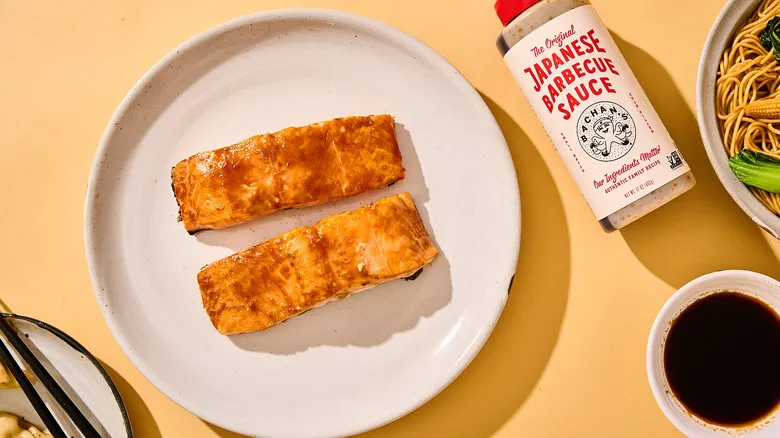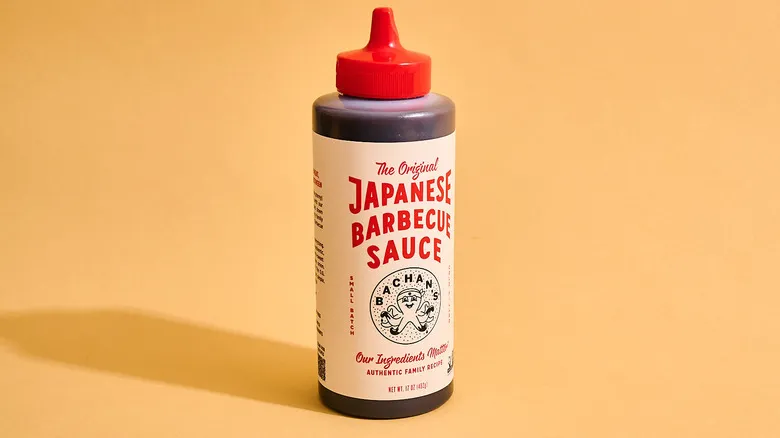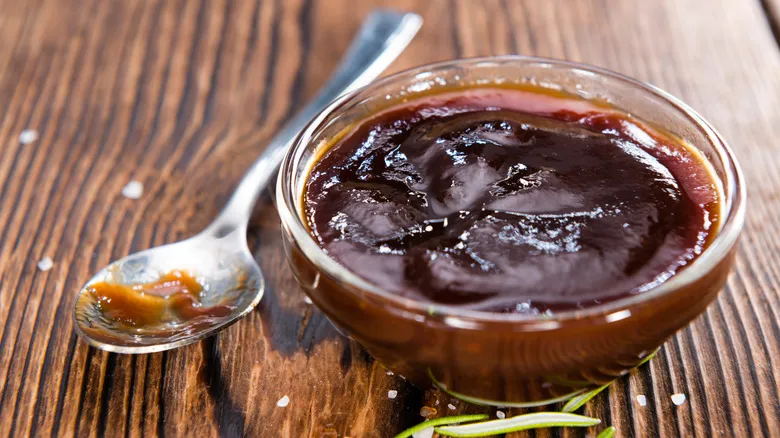I tried it as a glaze, a stir fry, and a dipping sauce

To experiment with Bachan's recipe, I applied the sauce to salmon filets before baking them. The sauce is more fluid than a standard barbecue sauce, yet still thick enough to create a glaze on the salmon. After baking, the sauce caramelized beautifully, delivering a rich savory flavor from the soy sauce's umami, complemented by a hint of sweetness. This method proved to be a success and offered a simple way to prepare lunches for the week.
Next, I decided to incorporate the sauce into a noodle stir fry. This is where the teriyaki-like flavor really shone through: the thin, savory sauce enveloped the noodles perfectly, masking any acidic barbecue notes. It reminded me of yakisoba sauce, which is akin to Worcestershire sauce. For anyone seeking a yakisoba taste, this is a convenient and versatile alternative.
Lastly, I explored a no-cook approach, curious if the barbecue label would hold up in raw applications. This is where things got a bit tricky (pun intended): Bachan's sauce is not nearly as thick as traditional barbecue sauce, resulting in a different experience. I tried it with popcorn chicken, egg rolls, and dumplings, and discovered that the sauce paired better with foods typically dipped in soy sauce rather than those usually enjoyed with barbecue. For instance, Bachan's would complement sushi wonderfully, but might not be the best match for chicken tenders or french fries. The solution? Opt for one of its dipping sauces instead, which are thicker and tangier.
Banchan's barbecue is, in fact, worth the hype

The reviews are spot on—this sauce truly lives up to the excitement surrounding it, thanks to its rich flavor, versatility, and distinctiveness. However, it's important to note that this sauce isn't your typical American barbecue variety. Instead, it captures the essence of Korean BBQ or Japanese teriyaki, offering a less tangy, thinner consistency that highlights umami. The key flavors in the original Bachan's sauce include soy, sesame, ginger, and garlic, setting it apart from the brown sugar, mustard, and tomato bases found in Kansas City and Texas sauces.
Some reviewers have pointed out that this sauce serves as a great substitute for discontinued teriyaki brands that complemented their favorite Japanese dishes, likely fueling its recent popularity. While it makes for a tangy alternative to soy sauce or teriyaki blends, it also pairs wonderfully with smoked meats, roast chicken, and grilled fish, delivering a unique umami kick. Its versatility makes it a valuable addition to your pantry, perfect for quick stir-fries or as part of your summer barbecue spread. If you're a sauce lover, I suggest exploring beyond the original flavor and trying the sweet and spicy, miso, or yuzu varieties, which offer more unique flavor profiles than traditional teriyaki. And if you're in need of a dipping sauce for chicken tenders, Bachan's has you covered there too—who doesn't appreciate a brand that considers all your needs?
Recommended

One Pantry Staple Gives Your Latkes A Major Flavor Boost

10 Genius Hacks For Restaurant-Quality Hot Chocolate

The Deglazing Mistake You're Making When Cooking Pot Roast

19 Things You Should Be Buying At Your Middle Eastern Grocery Store
Next up

